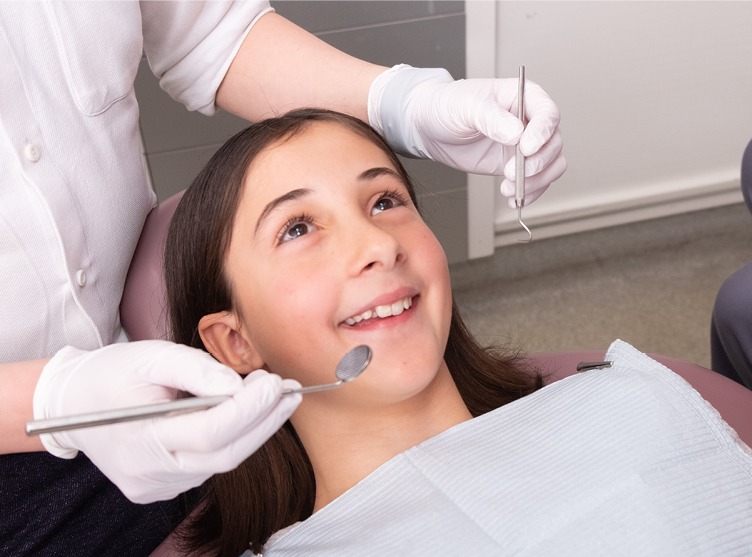Some Ideas on Legacy Orthodontics You Need To Know
Some Ideas on Legacy Orthodontics You Need To Know
Blog Article
Legacy Orthodontics Fundamentals Explained
Table of ContentsThe 20-Second Trick For Legacy OrthodonticsExamine This Report about Legacy OrthodonticsMore About Legacy OrthodonticsThe Of Legacy OrthodonticsThe Facts About Legacy Orthodontics Uncovered
At Advanced Orthodontics, we give clients with a all natural therapy experience. Furthermore, we provide adjustable treatment timetables, flexible repayment alternatives and an enjoyable, satisfying experience. orthodontics. Telephone call ( 480) 357-4900 today to learn more and routine a consultation.An orthodontist is a dental expert educated to detect, stop, and treat teeth and jaw irregularities. Orthodontists function with people of all ages, from youngsters to adults.
Malocclusion, or misaligned teeth, can bring about dental issues, consisting of tooth decay, gum illness, and hard or unpleasant chewing. But not everybody is birthed with straight teeth. If you have a poor bite or big rooms in between your teeth, you may wish to speak with a dental professional focusing on orthodontic care.
Rumored Buzz on Legacy Orthodontics
( Picture Credit Score: DigitalVision/Getty Images) Orthodontists use repaired and removable oral devices, like dental braces, retainers, and bands, to change the setting of teeth in your mouth. Orthodontic treatment is for oral abnormalities, consisting of: Misaligned teethBite problems, like an overbite or an underbiteCrowded teeth or teeth that are as well far apartJaw misalignmentThe objective of orthodontic therapy is to enhance your bite.
While you could assume of orthodontists as mostly for kids or young adults that need dental braces, they can fix dental problems at any type of age. Orthodontists attend college, dental school, and orthodontic institution.
All orthodontists are dentists, yet not all dental professionals are orthodontists. Orthodontic residency programs provide extensive, concentrated direction for oral professionals. They focus on two areas: How to properly and safely move teeth How to properly direct advancement in the teeth, jaw, and faceOnce an orthodontist has completed training, they have the choice to become board certified.
The Greatest Guide To Legacy Orthodontics
Imbalance, or malocclusion, is one of the most usual factor individuals see an orthodontist. It is hereditary and is the outcome of dimension differences between the upper and reduced jaw or between the jaw and teeth. Malocclusion brings about tooth overcrowding, a misshapen jaw, or irregular bite patterns. Malocclusion is typically treated with: Your orthodontist connects metal, ceramic, or plastic square bonds to your teeth.
If you have only minor malocclusion, you may be able to make use of clear braces, called aligners, rather of conventional braces (https://letterboxd.com/legacyortho/). Some people require a headgear to aid relocate teeth right into line with stress from outside the mouth. After dental braces or aligners, you'll need to use a retainer. A retainer is a custom-made tool that maintains your teeth in location.
They can create added area in the mouth without having to draw teeth. Orthodontists make use of cables, surgical screws, or plates to support your jaw bone.
You may require to see an orthodontist if you have: Crowding or otherwise enough room for all of your teethOverbite, when your upper teeth come over your bottom teethUnderbite, when your base teeth are too much forwardSpacing or problems with gapsCrossbite, which is when your upper teeth fit behind your base teeth when your mouth is closedOpen bite or a vertical space in between your front base and top teethMisplaced midline, when the center of your base and top teeth don't align Dealing with an oral malocclusion can: Make biting, chewing, and speaking easierImprove the symmetry of our face and your overall appearanceEase discomfort from temporomandibular joint problemsSeparate your teeth and make them simpler to clean, helping protect Read More Here against dental cavity or tooth cavities It's typically a dental professional that first notifications misaligned teeth throughout a routine test.
Things about Legacy Orthodontics

During your first orthodontic examination, you'll likely have: A dental examPhotos taken of your face and smileDental X-raysPanoramic (360 level) X-rays of your face and headImpressions to develop molds of your teethThese examinations will help your orthodontist know just how to proceed with your treatment. leesburg invisalign. An orthodontist is a dental expert that's had training to treat your teeth and jaw
An orthodontist is concentrated on your bite, so something like a broken tooth would be managed by a dental professional. Orthodontists are focused on your bite, or the means your teeth fit with each other, and the straightness of your teeth.
Ever before wondered how stars always appear to have flawlessly aligned teeth? The solution typically lies in the skilled hands of an orthodontist. What specifically does an orthodontist do? Orthodontists are dental experts who focus on fixing irregularities in the teeth and jaws. Their know-how surpasses just developing a stunning smile; it expands to enhancing your overall dental health and wellness and function.
Not known Details About Legacy Orthodontics

, orthodontists have a varied toolkit at their disposal. These reliable braces make use of a system of brackets bonded to the teeth and attached by cords.
These removable trays are tailor-made to considerably move the teeth's position. In instances of slim jaws, palatal expanders can be used to create space for appropriate tooth positioning.
Report this page